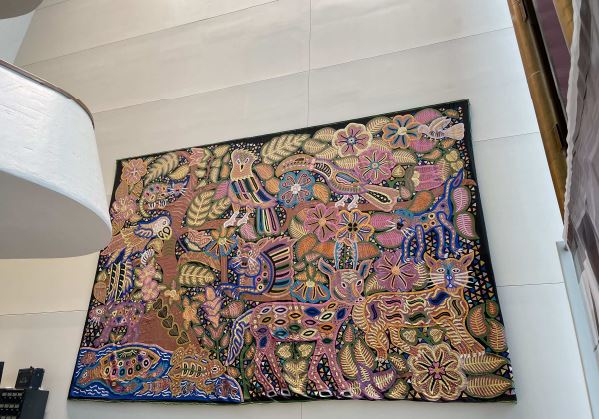
Mola Tapestry
The Mola Tapestry introduces the Mola art form to the United Nations. It is a handmade textile that appears in traditional feminine attire of the Kuna people from Panama. Molas originated from body painting. The Kuna transferred the traditional geometric designs onto fabric after the Spanish colonization and missionaries.
Molas were first painted directly on fabric, but the Kuna later developed the technique of reverse appliqué. Several layers of multi-colored cloth are sewn together, then the design is created by cutting parts of each layer. Finally, the edges of the layers are turned under and sewn down. The stitches are nearly invisible with blind stitches and tiny stitches. The best molas have fine stitching and are made with tiny needles.
The Mola Tapestry was presented during a ceremony on 5 October 1993 by then-Foreign Minister of Government of Panama, Dr. Julio E. Linares. Secretary-General Boutros Boutros-Ghali accepted the gift on behalf of the United Nations.

